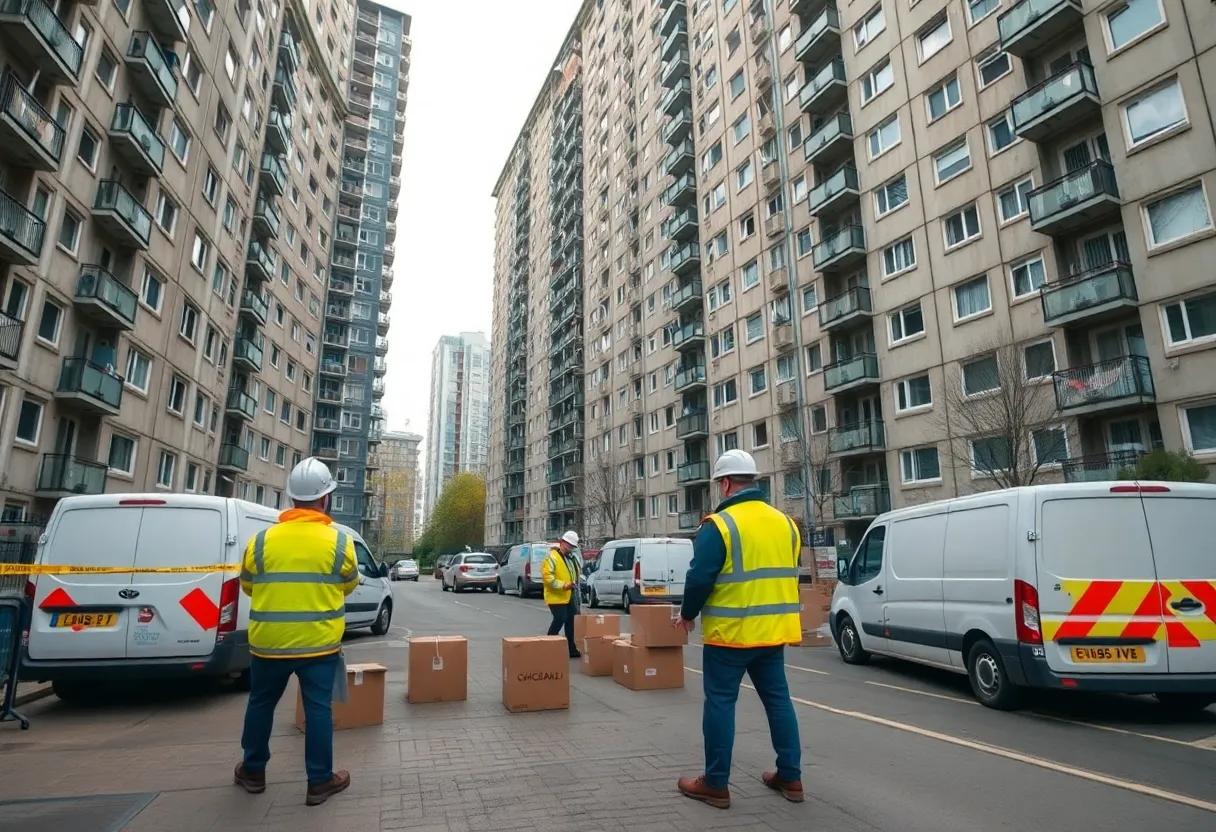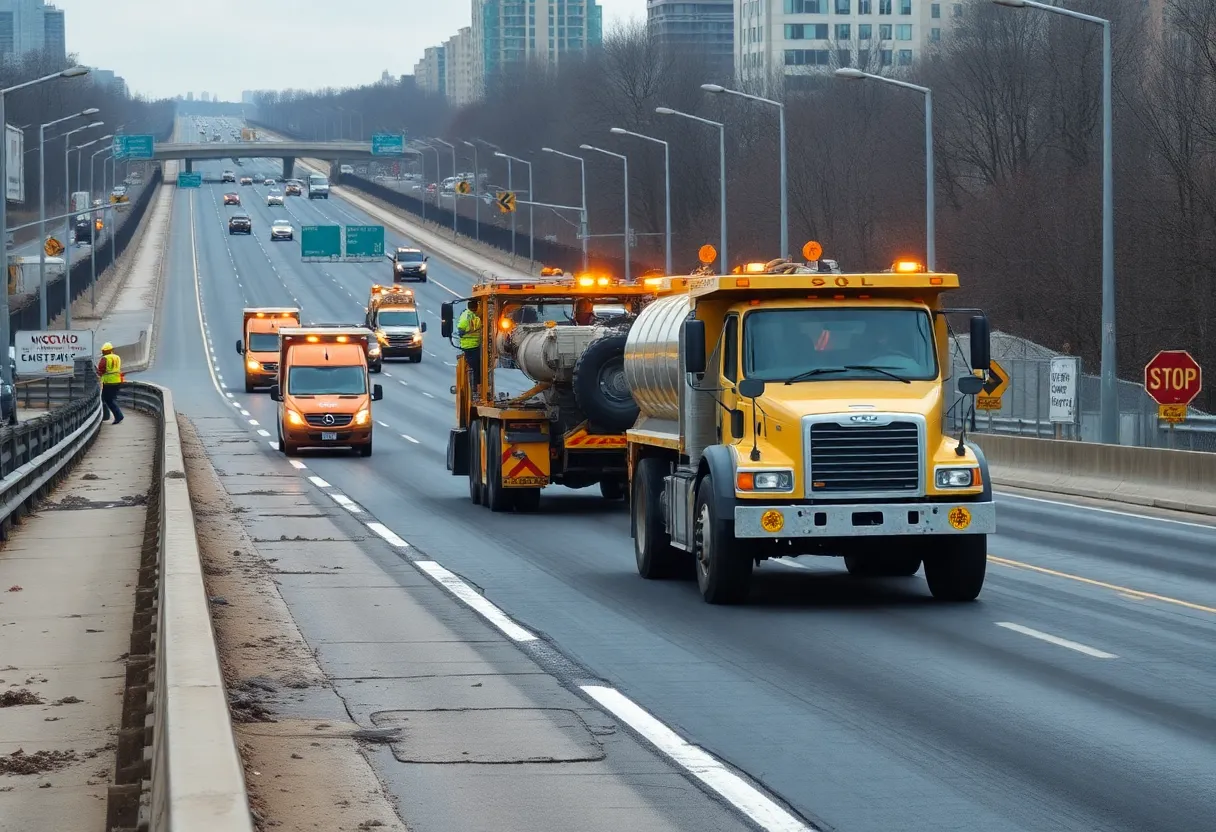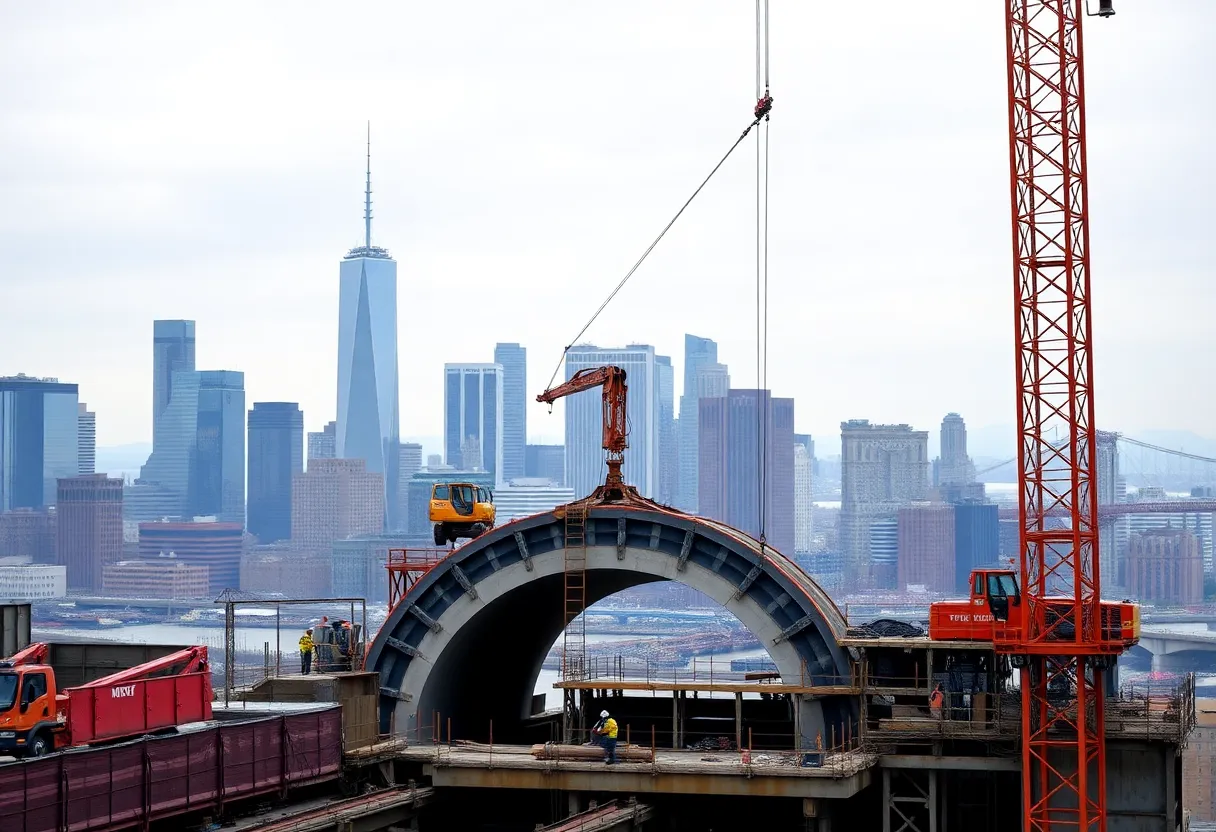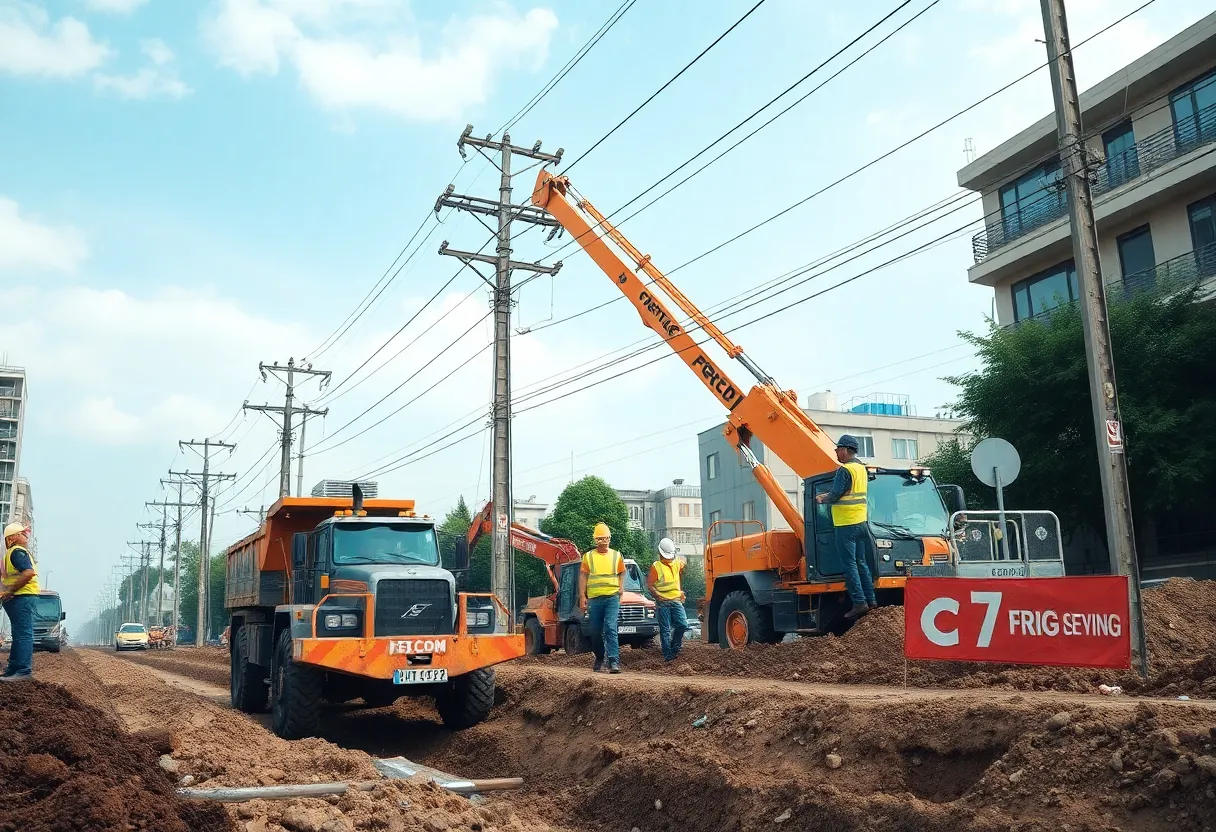Edmonton, north London, October 1, 2025
News Summary
The construction sector is under mounting pressure as Large Panel System (LPS) residential blocks trigger evacuations, buyouts and borough-level decommissioning after inspections found cracking, thermal movement and fire-safety risks. Councils face high remediation bills and in some cases opt to demolish or sell affected stock. Industry advisers and insurers are responding with new risk tools — including parametric cover, captives and pre-arranged capacity — while contractors seek contract models that better balance risk. Workforce shortages, rising costs and supply-chain strains compound the challenge, leaving residents, leaseholders and subcontractors facing disruption and financial stress.
High-level summary: Immediate tower-block evacuations and growing construction risk tools reshape safety and insurance choices
Recent building-safety decisions have forced tenants to leave two high-rise estates built with Large Panel System (LPS) concrete panels, triggering council buyouts and long-term decommissioning plans. At the same time, major risk advisers and construction managers are highlighting a mix of industry pressures — including digitalisation, climate risk, rising material and labour costs, supply-chain choke points, workforce shortages and new liabilities tied to emerging technologies such as AI and autonomous equipment — that shape insurance, contract and project approaches across the sector.
What prompted evacuations and decommissioning
Two multi-storey blocks were taken out of residential use after inspections found structural and safety problems associated with Large Panel System (LPS) construction. One council decided to decommission all LPS blocks in its area and either demolish or sell them, citing remediation costs stated to be more than £30 million for some blocks. Tenants were moved out and leaseholders are being offered buyouts. The councils stated that refurbishing the blocks to an acceptable standard would have been extremely expensive and very disruptive, and that decommissioning is the only viable and feasible option. Leaseholders said they were not offered enough to purchase a similar home in the local area, while councils said buyouts include market value plus a home loss and disturbance payment and compensation for fees.
Resident impacts and historic context
Many residents said they learned of LPS risks after being asked to evacuate or after utilities were turned off. Some reported long-running problems including cracks, damp, leaks and cold affecting their homes for years prior to the recent moves. Reports link current actions to a long regulatory timeline beginning with a major partial collapse in 1968 and continuing with post-2017 safety reviews and guidance that increased scrutiny of certain panelised and prefabricated systems. Councils said previous strengthening work was not always carried out until recently, and that degradation of panels can break down fire compartmentation and create increased safety risks.
Construction industry risk picture
A range of industry advisers and construction managers describe a volatile build cycle driven by socio-economic factors. They list digitalisation, climate risks, rising construction costs and supply chain choke points as current challenges shaping construction companies’ risk profiles. The advisers emphasise that understanding current and emerging risks is essential to design a risk management framework that balances retention, management and transfer needs.
Insurance market responses and tools
Industry materials describe a growing use of alternative risk transfer and analytics tools. Parametric insurance is presented as a flexible solution for heat, earthquakes and other hard-to-predict events, and in some markets it is being used to fill protection gaps where traditional markets exclude certain exposures. Risk analytics suites are promoted as delivering quantitative analytics and improved risk insights to support operational efficiency and resilience planning. Advisers also note that “buyer-friendly conditions for most insurance lines began in late 2024 and continued throughout Q1 and Q2 2025” in some markets, but they warn that market conditions can change quickly.
Contractual and cash-flow pressures on contractors and subcontractors
Project owners frequently push risk to contractors through contract models such as EPC, design-build and public-private partnerships. These models can produce large losses and lead many contractors to avoid them. Contractors are increasingly looking for alternative structures that better balance risk, including progressive design-build, alliance and integrated project delivery. Subcontractors are under cash-flow pressure: in 2023, 46 percent of subcontractors reported cash flow as a significant challenge. Ultra-large projects concentrating risk in a small number of subcontractors and insufficient performance security are cited as a systemic concern.
Labour, materials and new-technology risks
Workforce shortages are significant: nearly one in four construction workers are older than 55, and one adviser cites that the U.S. construction industry needs to attract half a million new workers in 2024 to balance supply and demand. Canadian construction employment fell by 0.6 percent year-over-year in February 2024. New materials such as mass timber are being used to meet sustainability goals but bring questions about long-term durability that stakeholders and insurers must address. AI and autonomous machine use can transform many construction processes but introduce new liability questions, for example responsibilities in accidents involving self-operating vehicles on job sites.
Construction management approach and project delivery
Construction managers describe meticulous planning across design through construction and fitout, with a focus on execution, safety, budgeting transparency and interface management to reduce surprises and delays. Construction management is presented as a risk-sharing contract that can offer flexibility and fair risk allocation for major projects. Experience handling complex programmes such as transport hubs, skyscrapers, life sciences facilities and data centres is highlighted as enabling quicker identification and reduction of inefficiencies in work packages.
Key industry numbers and capabilities referenced
- More than 1,000 construction industry specialists reported in one adviser’s global team and operation in more than 130 countries.
- Claims teams of more than 100 handlers, including former insurers and loss adjustors, were noted by one firm.
- US$6 billion in construction insurance premiums placed in 2024 was cited by an industry intermediary.
- In 2023, 46 percent of subcontractors reported cash flow as a significant challenge.
- Nearly 1 in 4 construction workers are older than 55, according to cited workforce sources.
- One large risk advisory group named an internal generative AI assistant LenAI that harnesses ChatGPT capabilities in a controlled environment.
Practical takeaways for owners, contractors and residents
Review contract terms that allocate delay and disruption costs, update insurance programmes for new technology and climate exposures, and consider alternative transfer tools such as parametric cover or captives. For residents and leaseholders, sudden decommissioning or utility changes can create financial strain and housing insecurity; statutory buyout elements and disturbance payments may be available, but experienced local housing advice is critical where buyout values do not match local housing costs.
Frequently asked questions
Q: Why were tenants moved out of some tower blocks?
A: Two multi-storey blocks were taken out of residential use after inspections found structural and safety problems associated with Large Panel System (LPS) construction.
Q: What did the councils decide about LPS blocks?
A: One council decided to decommission all LPS blocks in its area and either demolish or sell them, citing remediation costs stated to be more than £30 million for some blocks.
Q: What compensation did councils say they offered to leaseholders?
A: Councils said buyouts include market value plus a home loss and disturbance payment and compensation for fees.
Q: What industry pressures are shaping construction risk profiles?
A: Industry materials list digitalisation, climate risks, rising construction costs and supply chain choke points as current challenges shaping construction companies’ risk profiles.
Q: What workforce and subcontractor pressures were reported?
A: Nearly one in four construction workers are older than 55. In 2023, 46 percent of subcontractors reported cash flow as a significant challenge. The U.S. construction industry needs to attract half a million new workers in 2024 to balance supply and demand. Canadian construction employment fell by 0.6 percent year-over-year in February 2024.
Q: What alternative insurance tools and analytics are mentioned?
A: Parametric insurance is presented as a flexible solution for heat, earthquakes and other hard-to-predict events, and risk analytics suites are presented as delivering quantitative analytics and improved risk insights to support operational efficiency and resilience planning.
{
“@context”: “https://schema.org”,
“@type”: “FAQPage”,
“mainEntity”: [
{
“@type”: “Question”,
“name”: “Why were tenants moved out of some tower blocks?”,
“acceptedAnswer”: {
“@type”: “Answer”,
“text”: “Two multi-storey blocks were taken out of residential use after inspections found structural and safety problems associated with Large Panel System (LPS) construction.”
}
},
{
“@type”: “Question”,
“name”: “What did the councils decide about LPS blocks?”,
“acceptedAnswer”: {
“@type”: “Answer”,
“text”: “One council decided to decommission all LPS blocks in its area and either demolish or sell them, citing remediation costs stated to be more than £30 million for some blocks.”
}
},
{
“@type”: “Question”,
“name”: “What compensation did councils say they offered to leaseholders?”,
“acceptedAnswer”: {
“@type”: “Answer”,
“text”: “Councils said buyouts include market value plus a home loss and disturbance payment and compensation for fees.”
}
},
{
“@type”: “Question”,
“name”: “What industry pressures are shaping construction risk profiles?”,
“acceptedAnswer”: {
“@type”: “Answer”,
“text”: “Industry materials list digitalisation, climate risks, rising construction costs and supply chain choke points as current challenges shaping construction companies’ risk profiles.”
}
},
{
“@type”: “Question”,
“name”: “What workforce and subcontractor pressures were reported?”,
“acceptedAnswer”: {
“@type”: “Answer”,
“text”: “Nearly one in four construction workers are older than 55. In 2023, 46 percent of subcontractors reported cash flow as a significant challenge. The U.S. construction industry needs to attract half a million new workers in 2024 to balance supply and demand. Canadian construction employment fell by 0.6 percent year-over-year in February 2024.”
}
},
{
“@type”: “Question”,
“name”: “What alternative insurance tools and analytics are mentioned?”,
“acceptedAnswer”: {
“@type”: “Answer”,
“text”: “Parametric insurance is presented as a flexible solution for heat, earthquakes and other hard-to-predict events, and risk analytics suites are presented as delivering quantitative analytics and improved risk insights to support operational efficiency and resilience planning.”
}
}
]
}
Key features at a glance
| Feature | Detail |
|---|---|
| Immediate safety actions | Two tower blocks with LPS construction were decommissioned or evacuated and tenants moved out; councils offer buyouts and disturbance payments. |
| Remediation cost example | Remediation costs cited as in excess of £30 million for some LPS blocks. |
| Construction risk themes | Digitalisation, climate risk, rising construction costs and supply-chain choke points. |
| Insurance and analytics tools | Parametric insurance and risk analytics suites for quantitative insights and operational resilience. |
| Workforce and subcontractor pressures | Nearly 1 in 4 workers older than 55; U.S. need for 500,000 new workers in 2024; 46% of subcontractors reported cash-flow challenge in 2023. |
| Noted industry capacities | Referenced teams of more than 1,000 construction specialists, claims teams of more than 100, and US$6 billion in placed construction premiums in 2024. |
Deeper Dive: News & Info About This Topic
Additional Resources
- Marsh: Construction
- Wikipedia: Construction management
- BBC: Walbrook House evacuation / LPS concerns
- Google Search: Walbrook House LPS evacuation
- Aon: How North American construction contractors can mitigate emerging risks
- Google Scholar: construction risk mitigation
- WTW: Renewable energy and construction risks
- Encyclopedia Britannica: renewable energy construction
- The Conversation: Britain’s net-zero construction workforce at risk of burn-out
- Google News: construction workforce burnout
Author: Construction NY News
The NEW YORK STAFF WRITER represents the experienced team at constructionnynews.com, your go-to source for actionable local news and information in New York and beyond. Specializing in "news you can use," we cover essential topics like product reviews for personal and business needs, local business directories, politics, real estate trends, neighborhood insights, and state news affecting the area—with deep expertise drawn from years of dedicated reporting and strong community input, including local press releases and business updates. We deliver top reporting on high-value events such as the New York Build Expo, infrastructure breakthroughs, and cutting-edge construction technology showcases. Our coverage extends to key organizations like the Associated General Contractors of New York State and the Building Trades Employers' Association, plus leading businesses in construction and real estate that power the local economy such as Turner Construction Company and CMiC Global. As part of the broader network, including constructioncanews.com, constructiontxnews.com, and constructionflnews.com, we provide comprehensive, credible insights into the dynamic construction landscape across multiple states.





